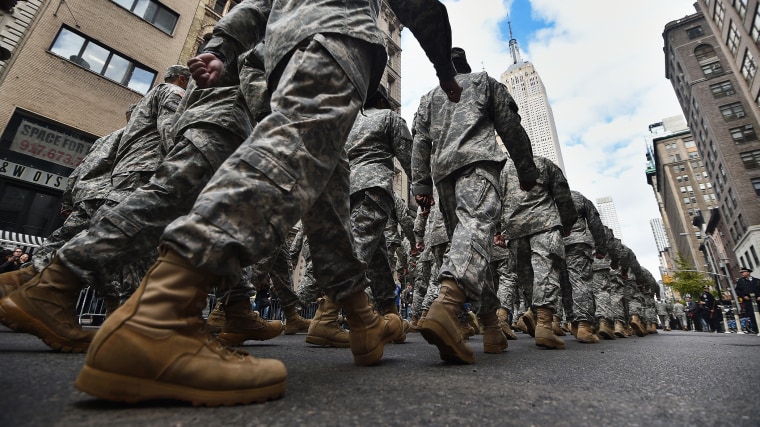In July 2017, Donald Trump announced a new policy via Twitter: the president would no longer allow transgender Americans to serve in the military. He hadn’t given anyone at the Pentagon a heads-up about his new discriminatory policy – officials throughout the executive branch were blindsided – and no one at the White House could explain the necessity of the change.
As regular readers may recall, Trump eventually defended the move by saying, "I think I'm doing a lot of people a favor by coming out and just saying it." I still have no idea what that meant.
Naturally, there was extensive litigation challenging the policy, but two months ago, in a 5-4 ruling, the Supreme Court allowed the White House to move forward with its ban.
Today, the Associated Press reports on how the administration is implementing the new policy, which will "largely bar transgender troops and military recruits from transitioning to another sex, and require most individuals to serve in their birth gender."
Under the new rules, currently serving transgender troops and anyone who has signed an enlistment contract by April 12 may continue with plans for hormone treatments and gender transition if they have been diagnosed with gender dysphoria.But after April 12, no one with gender dysphoria who is taking hormones or has transitioned to another gender will be allowed to enlist. And any currently serving troops diagnosed with gender dysphoria after April 12 will have to serve in their birth gender and will be barred from taking hormones or getting transition surgery.The memo lays out guidelines for discharging service members based on the new policy. It says a service member can be discharged based on a diagnosis of gender dysphoria if he or she is "unable or unwilling to adhere to all applicable standards, including the standards associated with his or her biological sex, or seeks transition to another gender."
As important as these discriminatory developments are, it's worth emphasizing that the fight isn't yet over, at least not completely.
For one thing, as the AP article noted, service secretaries will have the authority to "waive the policy on a case-by-case basis," and it's possible we'll see the service secretaries apply these waivers broadly.
What's more, while the Supreme Court cleared the way for the Trump administration to begin discriminating against transgender troops, the justices lifted a lower-court injunction that blocked the policy from being implemented. Litigation on the merits is ongoing -- and the administration may yet lose.
Finally, rumor has it that there's a presidential election next year, and if the Democratic ticket prevails, it's likely that the Republican president's ban will be reversed, though that may come too late for some of the Americans who volunteered to serve, putting their lives on the line for their country, only to be thrown out of the military because of their gender identity.
In the meantime, we're left to wonder exactly what problem Trump thinks he's solved. A report commissioned by the Pentagon two years ago found that allowing transgender Americans to serve would have little to no impact on military cohesion or readiness.
Adding insult to injury, this is not the kind of presidency Trump told Americans to expect. I remember this New York Times article from three years ago, right around the time Trump was wrapping up the Republican Party’s presidential nomination. The headline read, “Donald Trump’s More Accepting Views on Gay Issues Set Him Apart in G.O.P.”
Readers were told at the time that while Republicans have opposed civil rights for LGBT Americans, Trump is “far more accepting of sexual minorities than his party’s leaders have been.”
It was an impression Trump seemed largely comfortable with, at least to the extent that he could exploit the dynamic for votes. As regular readers may recall, there was an odd point in the 2016 campaign, shortly after the Orlando nightclub massacre, in which the future president insisted that LGBT voters, en masse, should move to the right and vote Republican. Trump, in apparent seriousness, said he, not Hillary Clinton, would be the “better friend” of the “LBGT” [sic] community. Just two days after the Orlando shooting, Trump added, “Thank you to the LGBT community! I will fight for you.”
Anthony Scaramucci, during his exceedingly brief stint as the White House’s communications director, declared that Trump “is most pro-LGBTQ rights [president] in history. Why’s that story not written in mainstream media?”
Yeah, it’s quite the mystery, isn’t it?
